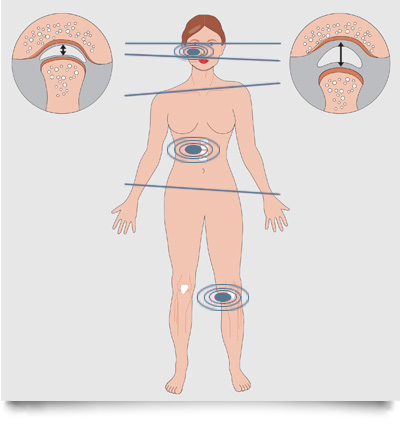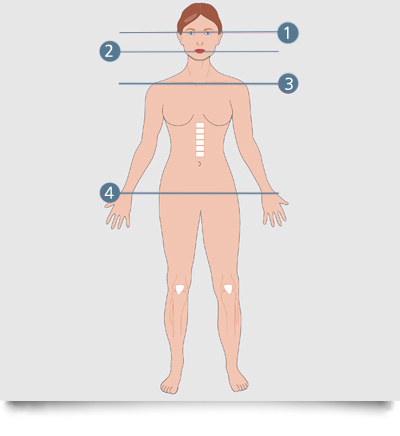Functional analysis
Lots of people suffer from temporomandibular joint syndrome (TMJ), which is actually a dysfunction of the masticatory system. The temporomandibular joint is the connection between the jawbone and the skull. The injured temporomandibular joint leads to pain with chewing, clicking, crackling, and popping of the jaw.
Signs and symptoms of TMJ:
- pain in the jaw joint
- jaw clicking and popping
- ear pain
- popping sounds in ears
- headaches
- stiff or sore jaw muscles
- pain in the temple area
Ask your dentist
To enable a sufficiently accurate diagnosis and to find the cause of the symptoms your jaws must be examined by various medical experts.
It is to be noted, that the dentist has to examine the jaw joint and a correct bite.

Causes of TMJ
Multiple factors contribute to the muscle tightness and dysfunction that characterize this condition.
Causes may include:
- misalignment (malocclusion) of or trauma to the teeth or jaw
- teeth grinding (bruxism)
- poor posture
- stress
- arthritis and other inflammatory musculoskeletal disorders
- orthodontic braces
- excessive gum chewing.
Diagnosis
Causes of the dysfunction can be determined by a manual functional analysis which is usually performed by a physiotherapist.
The examination includes imaging techniques, analysis of chewing simulation, palpation of the painful area and stress test. Furthermore it is necessary to measure the lower jaw while the mouth is open and in sideways movement.
The whole body statues is measured to determine blockades and tensions and to make a comprehensive diagnosis.
Orthopedic misalignment
Orthopedic misalignments (like a short leg or occlusion defects) can cause several visible posture changes, which may extend over the whole body static.

Ideal body posture
The ideal posture of the body should be viewed from a straight front perspective:
plane of the eyes, occlusal plane, plane of the shoulder girdle,plane of the hips.

The therapeutical options
The most important fact in functional therapy is a complete deblocked and relaxed condition of the whole body. To achieve this a cooperation of physiotherapist and orthopedist is necessary.
Individual splint support
In many cases we choose an occlusal splint to achieve an improvement of the tooth-, jaw joint- and muscle function. This step has a positive effect on the overall body status. Based on this we proceed with the final treatment.
These are therapy options based on functional analysis:
- grinding the natural teeth
- orthodontic correction
- reconstruction of either single teeth, tooth groups or the entire masticatory system

